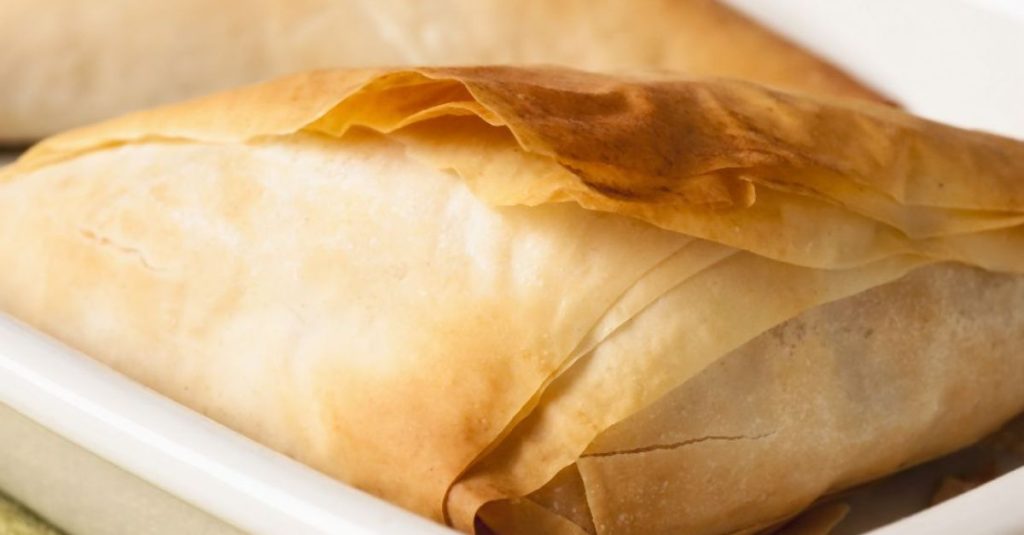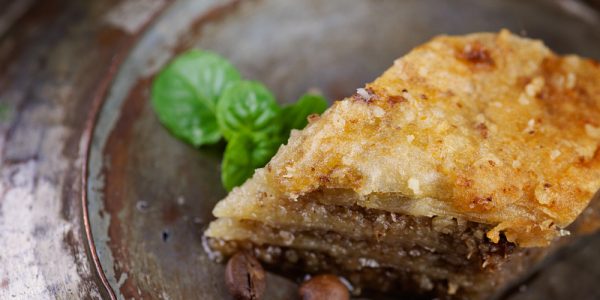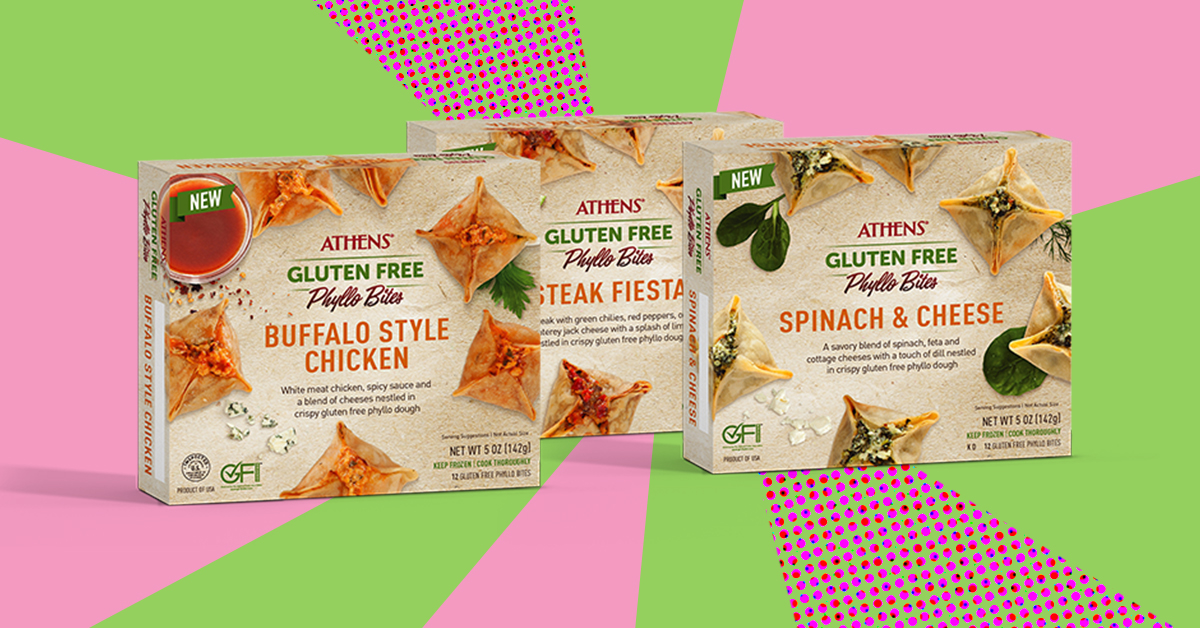This magical pastry, filo dough, has been a Mediterranean and Middle Eastern cuisine staple for centuries. And now, thanks to the ingenuity of Is Phyllo Dough gluten-free bakers, those with dietary restrictions can also enjoy this versatile and delicate treat. But be aware of its paper-thin layers. This phyllo dough packs a flavorful punch in every bite.
Not only is it incredibly light and crispy, but it also adds a unique texture to both sweet and savory dishes. From classic baklava to savory spinach and feta pies, the possibilities are endless with this gluten-free filo dough. So, let’s dive into the world of transparently delicious phyllo and discover all the delectable ways to incorporate it into our cooking and baking.
Is Phyllo Dough Gluten Free?

Have you ever had that moment when a dish is so delicious you fear it’s off-limits? Traditional phyllo dough, beloved for its delicate, crisp layers, is typically made from wheat flour, water, and vinegar. The wheat component brings gluten to the party, making regular phyllo dough a no-go for gluten-free people. But take heart!
The good news is that a gluten-free phyllo dough version rivals the original in texture and taste. With dietary restrictions, you can also enjoy this versatile and delicate treat. But be aware of its paper-thin layers. Flour, a touch of magic (and a bit of patience), create a phyllo dough that’s not just gluten-free but completely mouthwatering. Enjoy the crisp, flaky goodness without a hint of gluten. Let’s explore how!
Why you’re going to love this Is Phyllo Dough Gluten Free.
Picture this: golden-brown, shatteringly crisp layers of pastry, perfectly flaky and delightfully light. Now imagine indulging in this culinary delight guilt-free, with no gluten in sight. This is the allure of dietary restrictions. You can also enjoy this versatile and delicate treat. But be aware of its paper-thin layers. You’re getting all the textural allure of the original with none of the gluten-related consequences.
Plus, it’s healthier, opening a world of culinary possibilities for those on a gluten-free diet. So whether you’re wrapping up a savory spinach pie or crafting a sweet, sticky baklava with dietary restrictions, you can also enjoy this versatile and delicate treat. But be aware of its paper-thin layers. Will rise to the occasion. There’s something incredibly satisfying about crafting something so delicate and intricate, especially when you can eat it afterward.
Related: Chicken Of The Woods Recipe: A Flavorful Twist on Wild Mushroom Magic
What is phyllo dough?
Phyllo dough, also known as filo dough, is a staple in Mediterranean cuisine. This intriguing pastry dough has a reputation for being ultra-thin and super light. Almost translucent, phyllo dough sheets often create flaky layers in sweet and savory dishes. The dough is rolled or stretched into paper-thin sheets and then used in multiple layers, giving dishes their characteristic, deliciously delicate crunch.
While working with phyllo dough might seem daunting due to its thinness, don’t fret. Its fragility is part of its charm. Despite being thin, it’s amazingly versatile and adaptable. From Greek baklava to Turkish börek, phyllo dough is a treat that crosses cultures and tantalizes taste buds. Its airy lightness creates a unique dining experience that keeps people returning for more.
What is phyllo dough used for?
Phyllo dough is a versatile player in the culinary world. Its uses span from the sweet to the savory, with a distinct touch of elegance.
- Phyllo is the shining star in the iconic Greek dessert, Baklava. Stacked layers of phyllo, nuts, and honey create an irresistible, crunchy delight.
- Spanakopita, a savory Greek pie, uses phyllo dough to encase a flavorful spinach and feta filling.
- In Turkey, Börek—a filled pastry—owes its flaky exterior to phyllo.
- For a fun twist on classic dishes, try using phyllo as a crust for quiche or a replacement for pasta in lasagna.
- It also makes flaky, delicious tarts, turnovers, and strudles.
Phyllo dough’s thin, crisp layers make it an excellent choice for various dishes, and the gluten-free version opens up these possibilities to everyone.
What is phyllo dough made from?
Phyllo dough’s delicate texture is the result of a few simple but precise ingredients:
Wheat flour:
The base of the dough lends its structure and elasticity.
Water:
Hydrates the flour, creating the dough’s basic form.
Vinegar:
Assists in the development of gluten for a tender texture.
Salt:
It enhances flavor and helps regulate yeast activity.
A touch of oil:
It adds a subtle richness and ensures the dough remains pliable.
While these are the traditional components, creating gluten-free phyllo dough involves swapping wheat flour for a gluten-free blend. Regardless of the type of flour used, each ingredient plays a vital role in achieving that crisp, flaky goodness. So, let’s keep the pastries rolling, gluten-free and guilt-free!
What is gluten?
Gluten, a buzzword in food, refers to proteins found predominantly in wheat, barley, and rye. Visualize gluten as the glue that holds food together, maintaining its shape and elasticity. When you knead dough, gluten develops, leading to that desirable, chewy texture in bread. Its magic works in phyllo dough, too, granting it structure and a particular ‘snap.’
However, some people’s bodies view gluten as an invader, triggering responses ranging from mild discomfort to serious health issues like celiac disease. That’s where gluten-free alternatives, like our star gluten-free phyllo dough, come to the rescue, offering delectable textures and tastes without the health concerns linked to gluten. Gluten-free cooking is a bit like culinary wizardry!
Is phyllo dough the same as puff pastry?
- It is made with flour, water, and a small amount of oil or vinegar.
- Typically contains no leavening agent.
- She rolled extremely thin, creating multiple layers.
- It contains flour, water, and much butter (or sometimes lard).
- Leavening agents like baking powder or baking soda may be included.
- Butter is folded into the dough to create layers during baking.
In summary, while phyllo dough and puff pastry involve layering and result in a flaky texture, they differ in ingredients, texture, appearance, and cultural associations, making each suitable for specific culinary applications.
Ingredients
Let’s gather the critical characters for our gluten-free phyllo dough saga:
Gluten-Free Flour Blend:
The foundation of our dough offers structure without the gluten.
Xanthan Gum:
A gluten substitute that enhances the dough’s elasticity.
Water:
Breathes life into our dough, forming a smooth mix.
Apple Cider Vinegar:
Our secret ingredient mimics the tenderizing effect of gluten.
Salt:
A pinch to heighten flavors and ensure a well-rounded taste.
Olive Oil:
It adds a hint of richness and keeps our dough malleable.
Cornstarch:
A dusting for our working surface ensures our dough doesn’t stick.
Patience:
It is not a physical ingredient but essential to the process. Remember, we’re crafting paper-thin layers here.
A Dose of Culinary Courage:
Because tackling homemade phyllo dough is a foodie adventure!
That’s it! Gather these star players, roll up your sleeves, and prepare for gluten-free kitchen magic.
Instructions
- Begin by combining your gluten-free flour and xanthan gum in a bowl.
- Slowly add water, stirring constantly for a smooth mix.
- Pour in your apple cider vinegar.
- Sprinkle in your salt, mixing well to incorporate.
- Drizzle in the olive oil, blending until a dough forms.
- Knead the dough for about ten minutes until it’s elastic.
- Let the dough rest for about an hour.
- Now comes the rolling! Dust your work surface with cornstarch.
- Divide your dough into smaller pieces for easier rolling.
- Roll each piece as thin as you can, aiming for transparency.
- Remember, patience is key here. It’s a delicate process, but it’s worth it.
- Once rolled, use your gluten-free phyllo dough in your recipes as desired.
Equipment
Ready to craft your gluten-free phyllo dough? Let’s gear up! Here are the essentials:
Mixing Bowl:
Your culinary cauldron for blending the dough ingredients.
Wooden Spoon:
To stir up the magic (dough).
Measuring Cups and Spoons:
Accuracy is critical in this spellbinding recipe.
Rolling Pin:
Your wand for transforming a humble dough ball into paper-thin sheets.
Kitchen Scale:
It is ideal for portioning your dough into manageable sizes.
Sharp Knife:
To segment your dough with precision.
Pastry Brush:
Perfect for applying a thin sheen of oil or butter.
Baking Sheet:
Ready to cradle your creations into golden perfection?
Parchment Paper:
An ally against sticking, it is ideal for layering your phyllo dough.
Patience:
A key ingredient to successful phyllo dough crafting. It’s not an appliance, but it’s essential nonetheless!
A Dash of Adventurous Spirit:
To embrace the journey of gluten-free phyllo dough making.
With these tools, you’re set for a delicious culinary quest!
Related: Does Sierra Mist Have Caffeine? Dive into the Crisp Refreshment
Simple Steps to Making Your Own Gluten-Free Phyllo Dough
Creating gluten-free phyllo dough at home is an exciting culinary adventure. Here are the easy steps to follow:
- Start by mixing your gluten-free flour and xanthan gum.
- Gradually add water while stirring for a smooth consistency.
- Introduce your apple cider vinegar into the mixture.
- Sprinkle in a pinch of salt, blending thoroughly.
- Incorporate olive oil, stirring until your dough takes shape.
- Spend about ten minutes kneading the dough until it’s elastic.
- Let the dough take a well-deserved break for an hour.
- Dust your workspace with cornstarch, then start the rolling!
- Segment your dough for easier handling.
- Skillfully roll each piece until it is nearly transparent.
- Cover any dough you’re not using to keep it fresh.
- Use your handmade gluten-free phyllo dough in your favorite recipes.
Embrace the challenge, enjoy the process, and reap the tasty rewards!

Uses for gluten-free filo pastry
Gluten-free filo pastry is a master of culinary versatility, proving that gluten-free doesn’t mean taste-free. Here are some delicious uses:
- Get a sweet fix with gluten-free Baklava. Phyllo layers, nuts, and honey make it a gluten-free star.
- Relish Spanakopita guilt-free. Encase your spinach and feta filling in gluten-free phyllo for a savory surprise.
- Try gluten-free Börek. Thanks to our star ingredient, the flaky exterior of this filled pastry is a crowd-pleaser.
- Transform classics with a gluten-free twist. Use gluten-free phyllo as a quiche crust or a pasta substitute in lasagna.
- Perfect your patisserie game. Create tarts, turnovers, and strudels that are deliciously flaky and gluten-free.
Unleash your culinary creativity with gluten-free filo pastry. The options are endless and oh-so delicious!
Frequently Asked Questions
Does filo dough contain gluten?
Traditional filo dough is made with wheat flour and does contain gluten.
What puff pastry is gluten-free?
Gluten-free puff pastry options are available, often with alternative flours like rice or tapioca.
Does baklava contain gluten?
Yes, traditional baklava is made with layers of filo dough containing gluten.
What is phyllo dough made of?
Phyllo dough is traditionally made with flour, water, and a small amount of oil. The flour used is usually wheat flour, containing gluten.
What is a good substitute for phyllo dough?
Thin rice paper or gluten-free spring roll wrappers can serve as alternatives for a gluten-free option.
What is another name for phyllo dough?
Filo dough is also commonly called “strudel dough” in some regions.
Conclusion About Is There Gluten Free Phyllo Dough
Creating gluten-free phyllo dough at home isn’t just a culinary experiment—it’s an adventure. Whether you’re seasoned in gluten-free cooking or a beginner eager to learn, this paper-thin pastry invites you into a world of flaky delight. The magic of transforming simple ingredients into delicate, transparent pastry sheets is a joy to experience. And the resulting dishes? Simply spectacular.
Every bite is a testament to the triumph of gluten-free cooking, offering a balance of crispness, tenderness, and flavor that rivals the original. So, dust off that rolling pin and embrace the art of gluten-free phyllo dough making. Because once you experience this, there’s no turning back—the gluten-free culinary world awaits!

